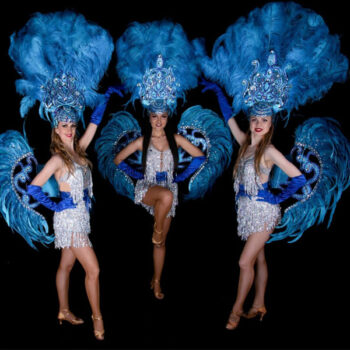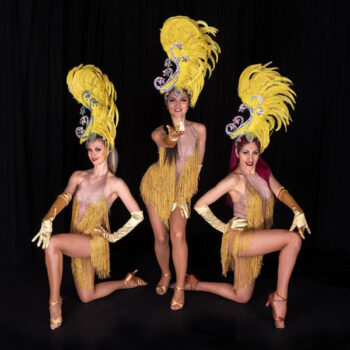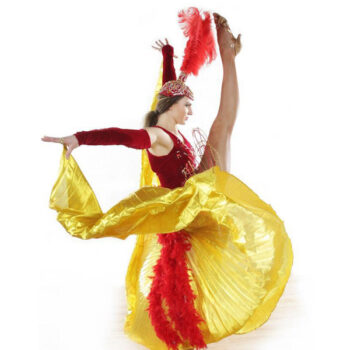Samba dance is a vibrant and energetic dance style that originated in Brazil. With its infectious rhythms, intricate footwork, and lively hip movements, it has become an integral part of Brazilian culture. In this article, we will delve into the world of samba, exploring its different types, historical roots, traditional dances, popular dance styles, and essential samba dance moves.
What kind of dance is the samba?
At its core, samba is a social dance that encourages interaction and connection between dancers. It is often performed in a group setting, where participants create a lively and joyful atmosphere through synchronized movements and infectious beats.
Samba is not limited to a single dance style or technique but encompasses a wide range of variations and interpretations. From the traditional samba no pé, which focuses on individual expression and improvisation, to the more structured and choreographed samba de enredo performed in carnival parades, each style adds its own flavor and artistic elements to the dance.
In addition to its cultural significance, samba has also gained international recognition and has become a popular dance style around the world. Samba schools, dance companies, and festivals dedicated to samba showcase the diversity and beauty of this dance form, attracting enthusiasts and performers from various backgrounds.
Samba is not only a dance but a way of life for many Brazilians. It is deeply ingrained in the social fabric of the country, and its rhythms and movements can be heard and seen in everyday life, from lively street festivals to the famous carnival celebrations.
What is the traditional dance of samba called?
The traditional dance of samba is called "samba no pé," which means "samba in the foot." It is a solo dance performed during carnival parades and other festive occasions. Samba no pé showcases the dancer's individuality as they express themselves through improvised movements and rhythmic variations.
Are there different types of samba?
Samba dance encompasses different types of samba dance styles, each with its own unique characteristics and cultural influences. Let's explore the two main types of samba dance.
What are the two main types of samba?
The samba dance styles names include "samba de roda" and "samba de enredo."
Samba de roda is a traditional Afro-Brazilian samba style that originated in the state of Bahia. It is performed in a circular formation, with participants singing, clapping, and dancing to the rhythm of the music. Samba de roda emphasizes improvisation, with dancers engaging in quick footwork and playful interactions.
Samba de enredo, on the other hand, is a more structured form of samba commonly seen in carnival parades and samba schools. It involves choreographed group performances accompanied by a samba song that tells a story. Samba de enredo combines intricate footwork with synchronized movements, creating visually captivating performances.
Samba dance styles list
In addition to the traditional samba dances, there are several popular samba dance styles with their names. These styles showcase the diversity and creativity within the samba dance community. Let's explore some of the notable samba dance styles:
- Samba no pé: This is the authentic and spontaneous style of samba performed in the streets and clubs of Brazil. It focuses on individual expression and improvisation.
- Samba de Gafieira: This is a partner dance that combines samba with elements of ballroom dance. It is often accompanied by live music and characterized by intricate footwork and elegant movements.
- Samba-rock: This style fuses samba with rock 'n' roll, creating a fusion of energetic and groovy movements. It is a popular style in dance clubs and social gatherings.
- Samba-reggae: Originating in Bahia, this style blends samba rhythms with the Afro-Caribbean sounds of reggae. It has a unique and infectious energy that captivates both dancers and spectators.
These popular samba dance styles attract dancers from all over the world and contribute to the vibrant and lively samba dance community.
History samba dance
Samba dance has a rich and fascinating history that traces its roots back to the early days of Brazil's development. The evolution of ballroom samba as a lively dance form is closely tied to the cultural and social dynamics of the country.
The origins of samba can be traced back to the African diaspora in Brazil during the time of slavery. Enslaved Africans brought their music and dance traditions from various regions of Africa, merging them with the local customs and rhythms of Brazil. These cultural exchanges and fusions gave birth to what would eventually become samba.
In its early stages, samba was often performed in informal gatherings and celebrations within Afro-Brazilian communities. It served as a way for enslaved Africans to express themselves, maintain their cultural identity, and find solace in their shared experiences.
As time went on, samba began to gain broader recognition and popularity. It started to make its way into the mainstream culture of Brazil, becoming a symbol of national identity and unity. The dance style became associated with carnival celebrations, where it was performed in street parades and masquerade balls.
Samba dance origin
The origins of solo samba dance can be traced back to the African roots brought to Brazil by enslaved Africans. The dance is deeply influenced by the rhythmic and movement traditions of various African cultures, including those from West and Central Africa.
African dances often involved intricate footwork, dynamic hip movements, and expressive gestures. These elements were combined with the music and customs of the indigenous people and the European colonizers, resulting in a unique dance form that became known as samba.
Samba was initially developed in the Afro-Brazilian communities of Bahia, particularly in the region known as the Recôncavo. This area had a high concentration of enslaved Africans who preserved their cultural practices despite the harsh conditions of slavery.
Over time, samba spread from Bahia to other parts of Brazil, including Rio de Janeiro. In Rio, samba found fertile ground for further development and became deeply ingrained in the city's cultural fabric. The urban context of Rio contributed to the evolution of samba, leading to the creation of new styles and modern dance techniques.
Samba dance examples
- One captivating example of Latin American dance is the "passista" style, performed by skilled samba dancers known as passistas. These dancers showcase their expertise with intricate footwork, rapid hip movements, and flamboyant costumes, captivating audiences with their energy and grace.
- Another example is the "malandro" style of samba, which originated in the bohemian neighborhoods of Rio de Janeiro. This style incorporates elements of street dance and portrays a carefree, mischievous character. The dancers exude confidence and charm as they effortlessly move to the syncopated rhythm of the music.
- Samba reggae, originating from Bahia, combines the energetic rhythms of samba with the pulsating beats of reggae. This fusion creates a unique and infectious dance style that highlights the African and Caribbean influences on Brazilian culture.
- The "rainha de bateria" or "queen of the drums" is a prominent figure in samba parades. This role is usually held by a female dancer who leads the percussion section, setting the pace and energy for the entire performance. The rainha de bateria captivates with her intricate dance moves, commanding presence, and elaborate costumes.
- Samba de gafieira is a partner samba dance style that combines samba with elements of ballroom dance. It is characterized by its smooth, elegant movements and close connection between partners. This style is often seen in dance clubs and social gatherings, where dancers showcase their skill and creativity on the dance floor.
- Samba rock, a fusion of samba axé and rock 'n' roll, brings a groovy and dynamic vibe to the dance floor. It combines the infectious rhythms of samba with the electric energy of rock music, creating a high-energy dance style that appeals to dancers of all backgrounds.
These examples demonstrate the diversity and creativity within the world of samba dance, each showcasing unique movements, rhythms, and cultural influences. Whether it's the expressive passista style, the playful malandro, or the infectious samba reggae, samba dance continues to evolve and captivate audiences with its vibrant and captivating performances.
How to dance the popular samba style?
To dance samba style, it is important to learn and master the fundamental samba dance moves, as well as get samba classes. These moves form the foundation of samba and allow dancers to express themselves fully.
Samba dance moves
These are the basic samba moves:
- Samba Step: Begin with your feet together, then take a small step to the side with your left foot while shifting your weight onto it. Bring your right foot together and repeat the step with the opposite foot. This basic step forms the rhythmical foundation of samba.
- Bounce: Maintain a slight bounce in your knees to synchronize with the lively rhythms of samba music. This adds energy and fluidity to your movements.
- Hip Sway: Emphasize the hip movements by incorporating sways and isolations. Move your hips from side to side, emphasizing the natural curves of your body.
Conclusion
Samba dance is a dynamic and culturally rich dance style that holds a deep significance in Brazilian culture. With its infectious rhythms, intricate footwork, and lively hip movements, samba continues to captivate dancers and audiences worldwide. Whether it's the traditional samba no pé or the diverse range of samba dance styles, each with its unique names, samba embodies the spirit of celebration and joy that defines the Brazilian people. So, let the vibrant energy of samba inspire you to embrace the dance and explore its various styles and moves. Dance to the rhythm of samba and experience the magic it brings to life.




